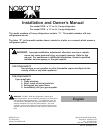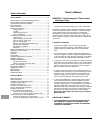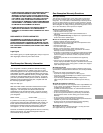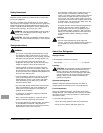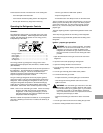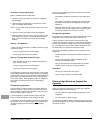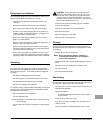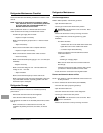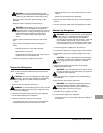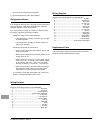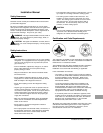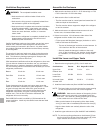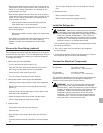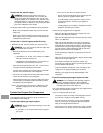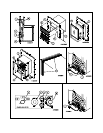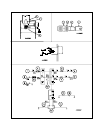
Installation and Owner’s Guide 7
Refrigerator Care Checklist
Your refrigerator will give you years of trouble free service if you
do these simple checks every three to six months:
- Keep the food compartment and the freezer clean. See
“Cleaning”.
- Defrost the refrigerator as necessary. See “Defrosting”.
- Make sure the door seals correctly. See “Door Sealing“.
- Be aware of any cooling changes that are not because of
weather, loading, or thermostat changes. If changes occur,
contact your dealer or service center.
- Make sure the gas supply is propane gas only and is not
butane or a butane mixture.
- When in propane gas operation, examine the appearance of
the flame. See “Gas Flame Inspection”.
- Make sure the air flow in the lower intake vent, through the
refrigerator coils and condenser, and out the upper exhaust
vent is not blocked or decreased.
- Make sure the area behind the refrigerator is clear. Do not
use the area behind the refrigerator for storage of anything,
especially gasoline and other flammable vapors and liquids.
Defrosting
A good time to clean the refrigerator is just after you defrost it.
To avoid food odors, clean the inside of the refrigerator as often
as necessary:
- Remove all food from the refrigerator.
NOTE: Do not use abrasive cleaners, chemicals, or
scouring pads because they can damage the
interior of the refrigerator.
- Wash the interior with a solution of dish detergent and warm
water.
- Rinse with a solution of baking soda and clean water.
- Dry with clean cloth.
- Put all food in the refrigerator.
Cleaning
Door Sealing
If the door does not seal correctly, excess frost will collect inside
the refrigerator. Make sure the door seals correctly:
- Close the door on a piece of paper that is about the size of a
dollar bill (See Art00980).
- Gently pull the paper.
- You should feel a slight drag between the door gasket
and the cabinet.
- Do this on all four sides of the door.
- If you do not feel drag on the paper, the door gasket is not
sealing correctly.
- Contact your dealer or Norcold authorized service center.
The cooling fins of the refrigerator operate at below freezing
temperature and will naturally form frost from humidity, which is
always present in the air. The humidity inside the refrigerator
increases:
- with higher outside temperature and humidity.
- with the storage of non-sealed fresh foods or warm foods.
- with the amount of time that the door(s) are open.
- with any air leakage into the refrigerator.
It is normal for frost to collect inside the refrigerator. Excess frost
decreases the cooling performance of the refrigerator. Defrost
the refrigerator as necessary:
- Remove all food from the refrigerator.
- Turn the refrigerator OFF.
NOTE: Defrosting the refrigerator makes excess water inside
the refrigerator.
- Put dry towels (etc.) inside the refrigerator to absorb melted
frost.
CAUTION: High temperatures can cause the inside
surfaces of the refrigerator to warp or melt. Do not use
pans of HOT water, a hair dryer, or any other high tem-
perature devices to defrost the refrigerator. Do not use
any hard or sharp objects to remove frost. Damage to the
interior of the refrigerator can occur.
- To increase the speed of defrosting, put pans of WARM
water in the refrigerator.
- Remove the wet towels (etc.) and dry the interior.
- Start up the refrigerator.
- Allow the refrigerator to cool down.
- Return all food to the refrigerator.



